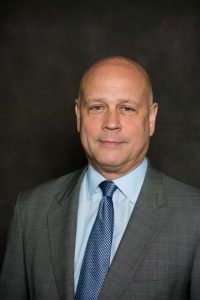 The world is becoming a younger place, at least in terms of population. In America, it is common to hear political leaders speak positively of the country’s youth as a national asset. A young population can be a great opportunity for society, as a source of economic growth and innovation. But in the world’s least developed countries, where the number of people ages 15 to 29 years old is growing at the most rapid rate, the unmet needs of young people are producing negative impacts beyond the borders of their countries. As Washington grapples with issues ranging from trade barriers, homeland security and the threat posed by al Qaeda and ISIS, understanding the implications of the world’s youth demographic is essential.
The world is becoming a younger place, at least in terms of population. In America, it is common to hear political leaders speak positively of the country’s youth as a national asset. A young population can be a great opportunity for society, as a source of economic growth and innovation. But in the world’s least developed countries, where the number of people ages 15 to 29 years old is growing at the most rapid rate, the unmet needs of young people are producing negative impacts beyond the borders of their countries. As Washington grapples with issues ranging from trade barriers, homeland security and the threat posed by al Qaeda and ISIS, understanding the implications of the world’s youth demographic is essential.
The World Bank estimates that youth comprise 44 percent of the world’s 7.2 billion people. This so-called “youth bulge” exists primarily in the least developed countries; on the African continent, 40 percent of the population is under the age of 15 and 70 percent is under the age of 30 years old. In its 2012 report, African Youth: Fulfilling the Potential, the Mo Ibrahim Foundation found that while the average age of an African is 19, the average age of an African leader is 62.
The youth bulge has already begun to impact U.S. foreign policy. As trade talks led by Washington attempt to erase barriers in Asia, the need of governments in that region to seek job protection demanded by their growing youth population will be a factor in the negotiations. Young Ukrainians, long viewed as apathetic, staged weeks of demonstrations which led to the ouster of Moscow’s ally, President Viktor Yanukovych, after he ended talks in late 2013 for Ukraine’s membership in the European Union. In 2015, Washington and NATO face serious challenges from Vladimir Putin in part as a result of his response to the changes initiated by young people in Kyiv.
As Washington grapples with issues ranging from trade barriers, homeland security and the threat posed by al Qaeda and ISIS, understanding the implications of the world’s youth demographic is essential.
Probably no region presents such stark examples of the impact of growing youth numbers than North Africa and the Middle East. Here, the increase in the youth demographic is compounded by the traditional social strictures of the region. Young people typically remain in their parent’s home until marriage, and marriage isn’t likely without the money which comes from gainful employment. Under- and unemployed young people in increasing numbers find little opportunity provided by the governments of North Africa and the Middle East and know, through social media, they are being denied basic opportunity afforded their peers in developed parts of the world.
The 2011 Arab Spring was largely led by young people who sought dignity and hope as they overthrew authoritarian rulers who had governed unchallenged for decades. The chain of events caught Washington off guard: after ruling for three decades, Egypt’s Hosni Mubarak was ousted by the “Facebook generation” in 18 days of protests and Tunisia’s Ben Ali fled the country after one month of protests started by a single young man trapped in a dead-end job who took his life in desperation. Unquestionably both Mubarak and Ben Ali were non-democratic leaders who looted their country’s coffers and violated human rights with impunity. But both men, whose countries were U.S. allies in the post-9/11 War on Terror, were abruptly replaced by failing to meet youth demands. America’s longtime partner in Egypt went on to an Islamist government overthrown now by military coup.
The ages of 17 to 25 are often referred to as the “fighting age” and, today, Tunisia has more young people than any other country, estimated at 3,000, in the conflict on the side of ISIS in Syria.
The outcome in Tunisia is somewhat more hopeful but remains fragile – the elections held in 2014 met international standards but with each of the three elections (parliamentary, then presidential and a presidential runoff), youth participation steadily declined as political leaders failed to outline jobs and education platforms. The fact that one presidential candidate was 88 years of age (and the eventual winner) and his opponent was 79 also failed to inspire young people. A failure of the political process to engage the largest demographic in the Middle East leaves a void which extremism seeks to fill. The ages of 17 to 25 are often referred to as the “fighting age” and, today, Tunisia has more young people than any other country, estimated at 3,000, in the conflict on the side of ISIS in Syria. Where they go from ISIS is an important security question for Tunisia and the West.
Given that the youth bulge in the world’s population will continue at least another decade, Washington needs to understand this key demographic and factor its impacts into planning. If Washington wants to move proactively, education reform and improving vocational education are areas where the United States has positive lessons to share, possibly through the development and exchange programs of the State Department. And America needs to encourage the leaders of the least developed countries to engage their youth – failure to do so could turn an opportunity for reform and economic growth into a globally destabilizing force.
Thomas E. Garrett serves as Vice President for Programs for the International Republican Institute.




